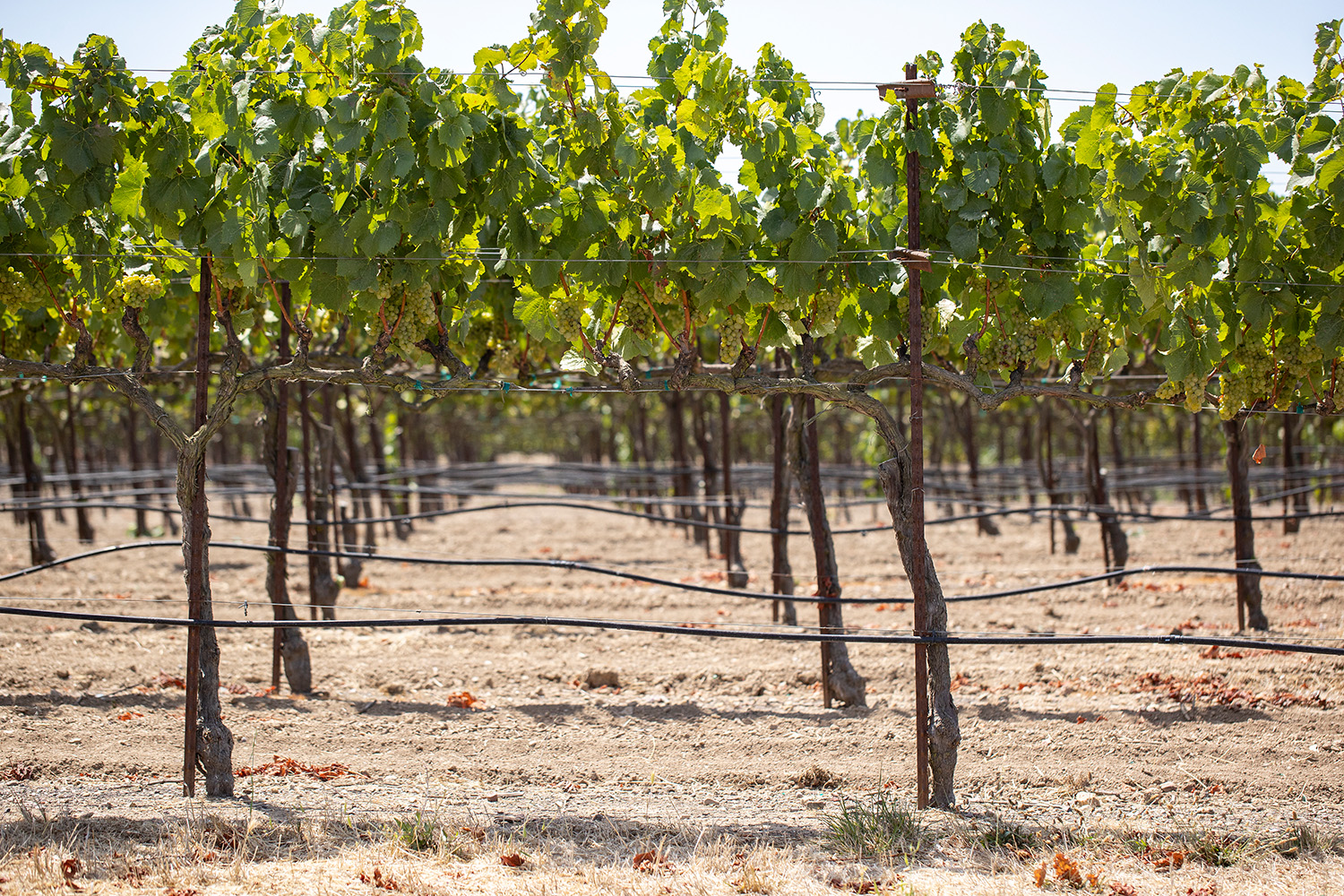Summer is the most exciting season in the lifecycle of a grapevine in Napa Valley. The vines form their leafy canopy, the grapes turn from flowers into fruit, our winemaker eagerly awaits for the grapes to ripen, and the whole valley excitedly gears up for harvest. In Carneros, our wait is almost over as Chardonnay grapes are often one of the first grape varieties picked. The unique microclimates of Napa Valley allow for a plethora of grape varieties to be grown extraordinarily well. The warm sunny days and cool nights in Carneros create an exceptional environment for balanced ripening of Chardonnay.

Flowering & Fruit Set
After bud break occurred in late February, the vines eagerly ventured into the next stage in their lifecycle: flowering. Flowering is the process in which little flowers bloom from the shoot of the vine. Because grapevines are self-pollinating, these flowers will eventually turn into berries. The formation of berries is called fruit set. This stage is crucial in determining crop size for the year’s harvest as there could be hundreds of flowers, but due to weather or other factors such as fertilization, only a portion of those will become grape berries. Lower yield years are not always a bad thing as lower yields often produce smaller berries which contributes to more concentrated flavors within the wine.
Veraison
One of the most exciting moments every summer is the onset of veraison, the processes in which the Chardonnay grapes turn from green to gold. Although veraison is more evident in red grapes, all grapes go through it. As the berry changes color, the tannins and acidity levels within the berry decrease, while the sugar levels increase. In addition to these changes, veraison signifies to the winemaker that we are nearing harvest.

Canopy Management
As summer is the season in which we see the most growth, canopy management is an important practice to control the vines. It helps improve the quality of the fruit, reduces the risk for disease, and optimizes vineyard manageability. This is especially important for chardonnay vines as they tend to be rather vigorous. Canopy management consists of a few different practices, suckering, shoot positioning, and leaf and lateral removal. These are used at different times throughout the growing season.
Suckering: After bud break, when the weather warms up, shoots quickly begin to sprout out of the dormant vine. Suckering is the process of removing the overgrowth of shoots when there are more than the desired number of buds per node or the removal of shoots that are located on the truck of the vine. In turn, this will provide more nutrients to the remaining shoots and provide better fruit quality.
Shoot Positioning: A critical part of canopy management involves our vineyard crews training the vines in an upward direction. This technique is preformed using wire, ties, and the balance of other vines to improve the canopy configuration and ensure the grapes below have enough space and sunlight to grow. Shoot positioning is often done multiple times throughout the growing season as vines can grow an average of an inch per day.
Leaf and Lateral Removal: Grapevines that have more vigorous canopies require leaf and lateral removal. This process requires our vineyard team to go vine by vine and remove excess leaves to provide enough sunlight and space for the grapes to develop properly. It requires a skilled vineyard crew as too many removed leaves can result in sunburnt grapes. The ideal leaf to vine ratio is about 20 leaves per vine.

What’s Next: Harvest
The weather this summer has been nearly perfect with the forecast for August expected to heat up a bit which will aid in the ripening of the grapes. Winemaker, Todd Graff foresees an early harvest this year throughout Napa Valley. He expects the Lewis Vineyard Chardonnay for our sparkling wines to be picked next week in mid-August and the rest of the Chardonnay in early September.








